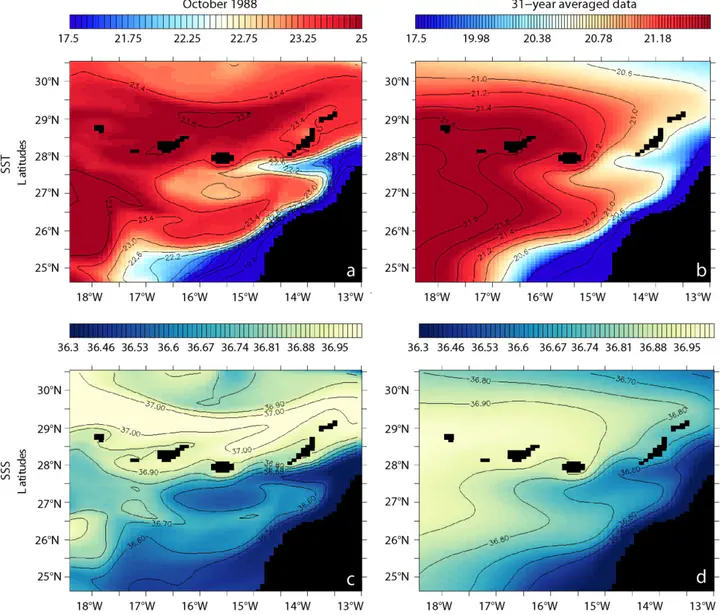Seasonal to interannual variability in density around the Canary Islands and their influence on the AMOC at 26°N

Abstract
The meridional interior flow obtained from the RAPID array is determined by horizontal density fluctuations at the eastern and western boundary of 26°N. The physical causes of these density variations are responsible for fluctuations in the Atlantic Meridional Overturning Circulation (AMOC) and through it, the meridional heat transport of the Atlantic. In this modeling study, a high-resolution ocean model is used to investigate the source and origin of the AMOC variability associated with the density fluctuations at the eastern boundary. The AMOC in the model is in good agreement with the RAPID observations and appears to adequately represent the smaller scale features of variability around the Canary Islands. In this paper, we identify a robust relationship between the density structure south of the Canary Islands, the local wind stress curl (WSC) around these islands and the AMOC using an empirical orthogonal functions analysis, wavelet transform, and wavelet coherence. We find that the deep density fluctuations at the eastern boundary of 26°N arise from the pumping effect of the spatial pattern of WSC south of the islands. These deep density fluctuations drive the AMOC both on seasonal and interannual time scales, through their influence on the basinwide tilt of the thermocline. At seasonal time scales, the density fluctuations south of the islands are driven by the WSC and directly influence the AMOC. At interannual time scales, a significant coherence is found between the density fluctuation and the southward Upper Mid-Ocean (UMO) transport although the origin of these density fluctuations is not explained by the direct pumping caused by the WSC.